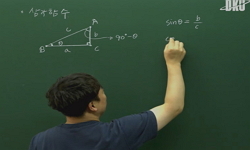With the advancement of optical design and manufacturing technology, optical components have found diverse applications, spanning from semiconductors to the aerospace industry. A reflective mirror is a basic component in optics and plays a crucial rol...
http://chineseinput.net/에서 pinyin(병음)방식으로 중국어를 변환할 수 있습니다.
변환된 중국어를 복사하여 사용하시면 됩니다.
- 中文 을 입력하시려면 zhongwen을 입력하시고 space를누르시면됩니다.
- 北京 을 입력하시려면 beijing을 입력하시고 space를 누르시면 됩니다.

기하학적 형상을 응용한 구면 반사경 구조설계에 관한 연구 = A Study on Structural Design of a Spherical Mirror using Geometric Shapes
한글로보기부가정보
다국어 초록 (Multilingual Abstract)
With the advancement of optical design and manufacturing technology, optical components have found diverse applications, spanning from semiconductors to the aerospace industry. A reflective mirror is a basic component in optics and plays a crucial role as the medium to reflect light. In this paper, a large mirror with a 700mm diameter was designed as a primary mirror using fused silica. The rear side of the mirror was subdivided into several equal angles, and neighboring vertices on the circumference were connected to establish a polygon. Accordingly, the geometric shapes of triangle, square, pentagon, and hexagon were formed. Furthermore, the mirror structure was strengthened by employing straight lines passing the vertices and the center of the circle. Based on the finite element analysis, deformations of the mirrors caused by the gravitational force were evaluated. Weight and deformation of the mirror structures were compared and analyzed to find a proper structure to reduce weight and deformation. This paper, therefore, presents a structural solution aimed at reducing the weight and deformation of a large aperture mirror induced by gravitational forces, thereby suggesting a geometric shape based structure to reduce surface deformation of a mirror.
동일학술지(권/호) 다른 논문
-
구조해석을 통한 SUV 자동차용 연료탱크 구성부품의 균열방지 설계 연구
- 한국기계기술학회
- 김기주
- 2023
- KCI등재
-
One-way ANOVA를 적용한 진원도 최적 측정방법에 대한 연구
- 한국기계기술학회
- 유민우
- 2023
- KCI등재
-
Classifier Separator Mill (CSM) 내 그라인딩 디스크 열유동 해석
- 한국기계기술학회
- 민경호
- 2023
- KCI등재
-
120mm 박격포 포수전시기 전원공급 로직 개선에 관한 연구
- 한국기계기술학회
- 손민구
- 2023
- KCI등재





 KCI
KCI 코리아스칼라
코리아스칼라






